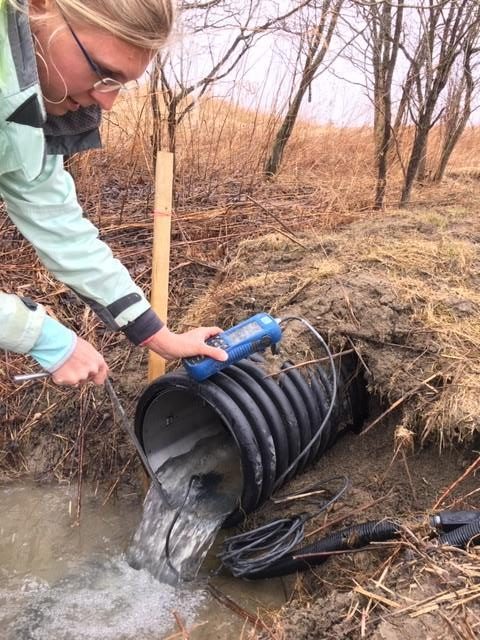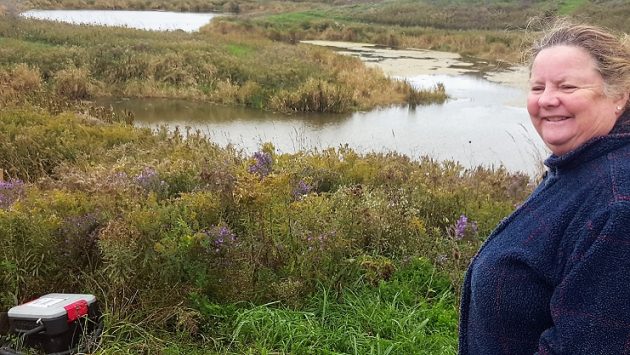
News
Environment
First year of phosphorus research in the Lake Erie watershed completed
October 2, 2019 By Drainage Contractor
 Research at recently restored wetland basins will assess their efficiency in removing phosphorus from surface-water runoff. Photo courtesy of Ducks Unlimited Canada.
Research at recently restored wetland basins will assess their efficiency in removing phosphorus from surface-water runoff. Photo courtesy of Ducks Unlimited Canada. Ducks Unlimited Canada (DUC) is wrapping up the first year of a proposed three-year study in the Lake Erie watershed. Research at recently restored wetland basins will assess their efficiency in removing phosphorus from surface-water runoff to better inform conservation decisions that improve water quality.
Despite the uptake of best management practices that help retain nutrients – used as fertilizer, for example – on the land, there are other factors that are harder control. Large rainfalls and snow melts continue to wash phosphorus into rivers and lakes. The excess nutrients can support rapidly growing cyanobacteria, or blue-green algae, which thrive in a warm and nutrient-rich environment. Resulting toxins in the water can be highly dangerous for wildlife, pets and people.
DUC has worked within the Lake Erie watershed for several years collaborating with the federal and Ontario governments, conservation agencies and private landowners to use wetlands to capture nutrients from the surrounding landscape. Support was also provided by the U.S. Fish and Wildlife Service via the North American Wetlands Conservation Act, a continental program for habitat conservation.
More than 100 wetlands have been constructed or restored in the watershed. DUC, in a media release, say there is so much interest from private landowners in restoring wetlands that there is now a project waiting list.

Landowner Mary-Ellen King beside Lake Lindsay, one of eight study sites in the Lake Erie watershed. Photo courtesy of Ducks Unlimited Canada.
Quantifying the role of restored wetlands in protecting rivers and lakes
The purpose of the study is to assess the phosphorus removal efficiency of these small, restored wetlands.
Led by research scientists at DUC’s Institute for Wetland and Waterfowl Research, the study will quantify how much phosphorus is captured in eight restored wetlands and if there is any potential to improve the wetlands’ performance. DUC states “this research could not happen without the generosity of the private landowners who agreed to be part of the project.” To date, the study has received funding from Ontario’s Ministry of Natural Resources and Forestry.
Restored wetlands provide habitat for waterfowl and many other benefits to the landscape. Today, DUC sees a need for better understanding of benefits that extend beyond habitat for wildlife as we look to wetlands to help improve surface-water quality in southern Ontario.
The study will help guide wetland restoration design and the strategic placement of restorations within watersheds. Wetlands remove nutrients from surface water by storing them in the basin sediments or using them to grow vibrant aquatic vegetation. Many factors can influence a specific wetland basin’s ability to retain phosphorus, including the age and size of the wetland, microbial and vegetation communities, and upstream drainage which moves water swiftly into the wetland.
“The better we understand the role of wetlands, the better we can choose conservation actions that best protect the health of watersheds—and ultimately, the Great Lakes at the end of the line,” the DUC release states.
DUC is seeking funding to continue this research for a second year and has placed the project on hold as of October 1, 2019.
Print this page